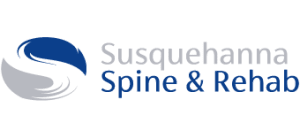Playing Through the Pain Part 3
I’ve attended a few of the NFL chiropractors pre-season training seminars. What I really want to do is be a motorsports chiropractor. A good friend of mine practices right outside of Charlotte. Her patient base is almost exclusively NASCAR drivers and crew. I can’t really relocate to North Carolina, so I fantasize about winning the Powerball and buying my own Indy Car team just so that I can be the team doctor, and get good seats for the 500. I’m even a member of the International Council on Motorsport Science and Medicine. But I also have three of the girliest girl daughters anyone could have. So I’m also a member of the International Association for Dance Medicine & Science. To be honest, I haven’t even bought a lotto ticket in probably 25 years, so I won’t be owning that Indy Car team anytime soon. Instead, I’ve completed the NYU School of Medicine Post-Graduate Principles of Dance Medicine course.

Most of the classes dealt with dance specific biomechanics, testing and exam procedures to best diagnose injuries and rule out differentials. There were naturally many courses on specific rehab procedures for common dance injuries and maladies along with prevention techniques. If I were to share all the wisdom I learned, this email would be longer than all the volumes written on the story about a woman and a man. So today, I’m going to share just a few pearls, and then over the next few weeks I’ll share some more. Now while these points are dance specific, many if not most can be translated into all sports and even general life itself.
- Dancers that spend more than 60 minutes a week on point are three times more likely to get injured.
- Carbohydrates are crucial to maintain intensity. A multifaceted approach is needed. A pre-load in the morning, but titration as the day goes on, especially with fluids to ensure intensity of activity over duration. Meaning, complex carbohydrates in the morning, then hourly during training, more carbohydrates are needed with fluids to keep the engines running. Fruit and sports drinks are a good source.
- Protein though is the limiting factor in activity and injury prevention. Meaning, while carbs are a necessary fuel source, performers and athletes NEED 1g/kg body weight min of protein to maintain the structural integrity of their body.
- If taking NSAIDs (Advil, Aleve, Aspirin etc), you will not get any growth or gain with exercise and they will inhibit healing.
- They key to all ankle injuries is having full range of motion, endurance, strength and proper strength ratios in the hip.
- The epicenter of plantar fasciitis, heal spurs and Achilles tendonitis is the big toe.
- Toe shoes (and all equipment really) needs to be re-sized every 3-6 months.
